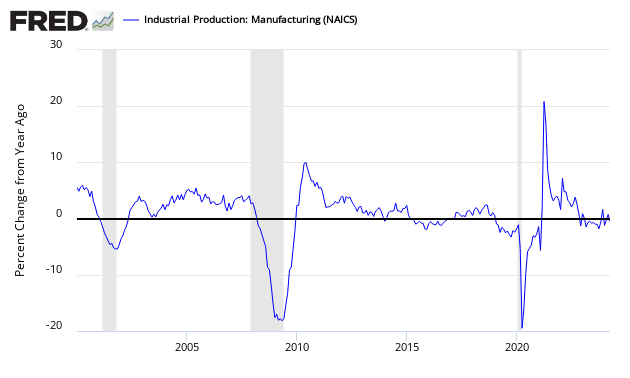February 2017 Kansas City Fed Manufacturing At Highest Level Since June 2011

Of the three regional manufacturing surveys released for February, all are in expansion..
Analyst Opinion of Kansas City Fed Manufacturing
Kansas City Fed manufacturing has been one of the more stable districts and their index improved. Key internals improved.
There were no market expectations reported from Bloomberg - and the reported value was 14. Any value below zero is contraction.
The Federal Reserve Bank of Kansas City released the February Manufacturing Survey today. According to Chad Wilkerson, vice president and economist at the Federal Reserve Bank of Kansas City, the survey revealed that Tenth District manufacturing activity expanded further with continued strong expectations.
"This was the highest reading for our month-over-month composite index since June 2011," said Wilkerson. "In addition, the future composite index was the highest since our survey switched to a monthly frequency in 2001."
TENTH DISTRICT MANUFACTURING SUMMARY
Tenth District manufacturing activity expanded further in February to its highest composite reading since June 2011, and producers' expectations for future activity remained very strong. Most price indexes recorded little change, with the exception of expected input prices which increased markedly.
The month-over-month composite index was 14 in February, its highest reading since June 2011, up from 9 in both January and December (Tables 1 & 2, Chart). The composite index is an average of the production, new orders, employment, supplier delivery time, and raw materials inventory indexes. Activity in both durable and nondurable goods plants increased, particularly for metals, machinery, computer, and electronic products. Most month-over-month indexes improved moderately in February. The new orders, order backlog, and employment indexes all edged higher, and the new orders for exports index moved into positive territory for the first time in over a year. On the other hand, the production and shipments indexes eased slightly but remained at solid levels. The finished goods inventory index rose from -4 to 5, and the raw materials inventory index also moved into positive territory.
Most year-over-year factory indexes remained stable after rising in recent months. The composite year-over-year index was largely unchanged at 6, and the shipments and new orders for exports indexes also recorded little change. The production index fell from 11 to 3, and the new orders and employment index also edged lower. In contrast, the order backlog index rose modestly, and the capital expenditures index jumped from -2 to 14. The raw materials inventory index increased from -3 to 3, while the finished goods inventory index remained unchanged.
Summary of all Federal Reserve Districts Manufacturing:
Richmond Fed (hyperlink to reports):
z richmond_man.PNG
Kansas Fed (hyperlink to reports):
z kansas_man.PNG
Dallas Fed (hyperlink to reports):
Philly Fed (hyperlink to reports):
New York Fed (hyperlink to reports):
Federal Reserve Industrial Production - Actual Data (hyperlink to report):

Holding this and other survey's Econintersect follows accountable for their predictions, the following graph compares the hard data from Industrial Products manufacturing subindex (dark blue bar) and US Census manufacturing shipments (lighter blue bar) to the Kansas City Fed survey (light green bar).
Comparing Surveys to Hard Data:

In the above graphic, hard data is the long bars, and surveys are the short bars. The arrows on the left side are the key to growth or contraction.
Disclosure: None.









